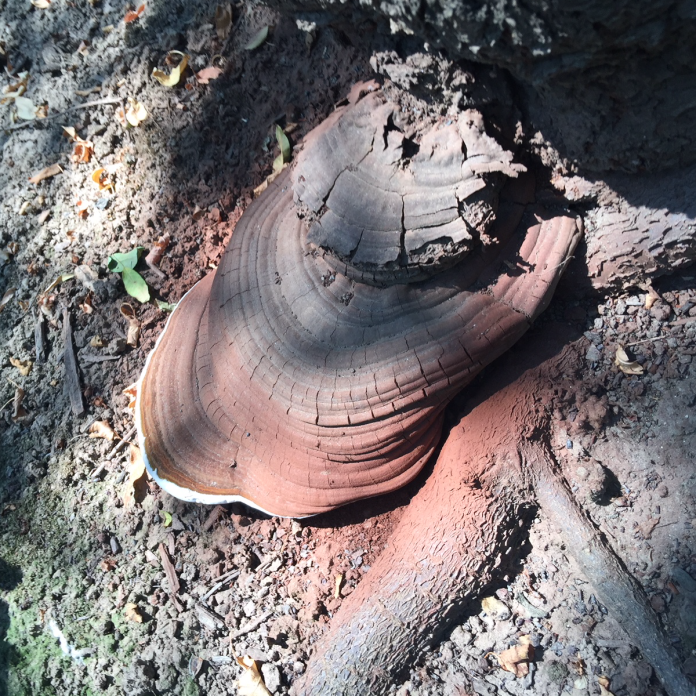
UC plant pathologists are currently conducting spore surveys to assess the spread of Ganoderma root rot in Central Valley almond orchards.
This disease, Ganoderma adspersum, is much more prevalent in the southern Central Valley where it was likely first introduced, said Daisy Hernandez, a researcher in the UC Davis plant pathology department. The fungus has recently been found further north in the valley, a sign that it is spreading.
This wood-rotting and airborne fungi causes trees to rot from the inside out, leaving weakened trunks at the soil line and causing infected trees to fall. There is no known control once trees are infected. Fourth leaf trees can be infected. Average age of infected trees is 14.
Conks, the fungal fruiting bodies, grow at the soil line on exposed roots and are a sign of a Ganoderma infection. Live conks are a brilliant white color on the underside and release rust-colored spores which often accumulate on the upper surface of the conk making it appear red.
Other signs on trees are white rot and mycelium at infection sites. The fungus causes heartwood and sapwood to decay, reducing structural stability.
Trees with Ganoderma infections show signs of general decline. There may also be a flat strip on the tree trunk or clefting at the graft union. Many infected orchards are first-generation and have a high incidence of conks. These produce “astronomical” numbers of spores, 12 to 40 million a day.
Hernandez said spread of Ganoderma infections in orchards is attributed to airborne spores from mature conks. A common factor among infected almond orchards is the sandy loam soil that allows for proper drainage. Hernandez said it might be possible that this soil type contributes to the fungus’ ability to spread via spores that percolate up to 60 centimeters into the soil. When the trees are irrigated, the spores infect roots that have become damaged during shaking for harvest and sanitation. Sweeping also promotes spore dispersal throughout the orchard. There is no evidence the infection spreads from root to root. Each infection is spore-related.
Conks on trees may be removed and destroyed to delay infections, but care must be taken to not cause further spread of spores in the orchard. Delay is the keyword here, Hernandez noted, as conks can regrow at the same site in five to ten weeks.






















